Kitchen renovation industry is large with huge turnovers and very good profits.
By early 1990, British kitchen renovation market reached the billion pound mark. The general trend is that the interest in kitchen renovation is steady, despite market fluctuations. Old houses need kitchens replaced; new houses need kitchens from scratch. Kitchen designers are always on demand.
Enroll now and change your life!http://www.kitchendesignacademyonline.net/contact/
 Luca Meda, industrial designer / Italy
Luca Meda, industrial designer / Italy
With total commitment and passion, he has contributed to the design culture of Dada and the Molteni Group. This is almost a paradox for a designer who used a pencil to draw the world. An artist who loved getting his hands dirty with reality. ?Luca Meda was born by chance in Chiavari where his family was on holiday. He grew up and studied in Milan, at the Brera Art School. He loved the city and its cityscapes. He then moved to Germany where he studied at the Ulm School, one of the most prestigious design schools in the world. There he met Aldo Rossi, and together they opened a studio in Milan. From the late 70s he helped to write the story of Dada:Nuvola, Amarena, Banco, Tempera, Zelig, Vela… Icons of design.
DADA
BANCO
Ergonomic fitted kitchen, design by Luca Meda

Over forty years of experience and passion working on Made in Italy furniture
Maurizio Minacciolo, grew up in his father’s furniture business and has always been passionate about the industry. In the early 70s he decided to chase his dream of setting up a small company. His idea was to industrialise the manufacturing of country furniture in the ampezzo-tirol style which was highly fashionable at that time. In 1973 the first factory was built and Minacciolo, thanks to the increasingly positive response from the market, experienced rapid growth. And as a result in 1985 the new headquarters in San Biagio di Callalta were opened: a factory of 3,000m2, which has since been extended up to 12,000m2. As a result of the refined woodwork and the innovative furniture collections that were being sold, the Company was making headway and began to develop its commercial and distribution structure.
1991 was a major turning point. Minacciolo continued innovating and constantly working to make themselves the best they could be. From this theTolà collection was born. This was a collection of original country style furniture where elegant colours such as “green sage” and “powder blue” elegantly emerged to reflect provincial, English and Umbrian-Tuscan styles. All of this grew organically from the cutting edge technology they used as well as their Italian know-how which are all part of their heritage. In the 90s, the Company was already well established and recognised on a national level. It then became known on international markets for its high quality and innovative features.
In 2001, during this commercial boom period, another important manufacturing milestone was achieved. Minacciolo created the new English Mood collection that was immediately successful. Characterized by delicate and refined lines, this collection gave an added chic dimension to the country style which resulted in a renewed personality and a new development in furniture. From its original design which appealed only to country homes Minacciolo’s new country chic design opened up a whole new dimension.
Over the following years, the English Mood collection was constantly being developed and expanded, continually being adapted so as to meet the new demands on the market. Today, this collection offers a complete “house programme”, offering unprecedented elegance and stylistic continuity in any home: from the kitchen to the dining room, from the bedroom to the bathroom. As well as this already appealing and recognised collection, Minacciolo created two new collections in 2012 on the occasion of Eurocucina, with an original and personal contemporary design. Minà and Natural Skin, also use materials that are all natural and these remain the traditional ones.

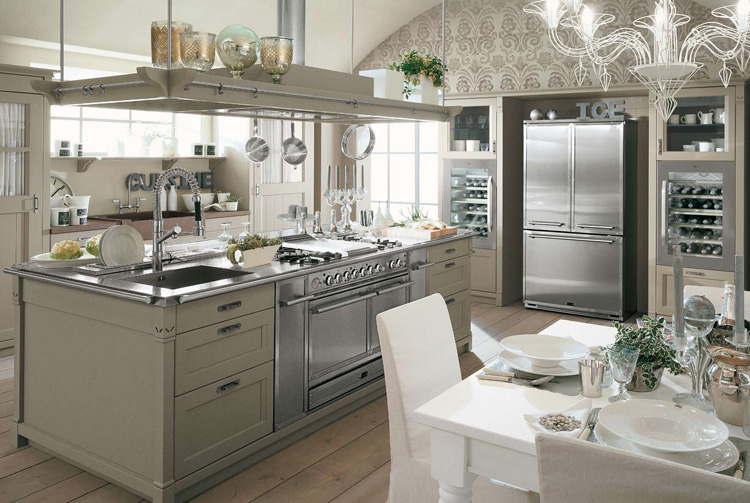
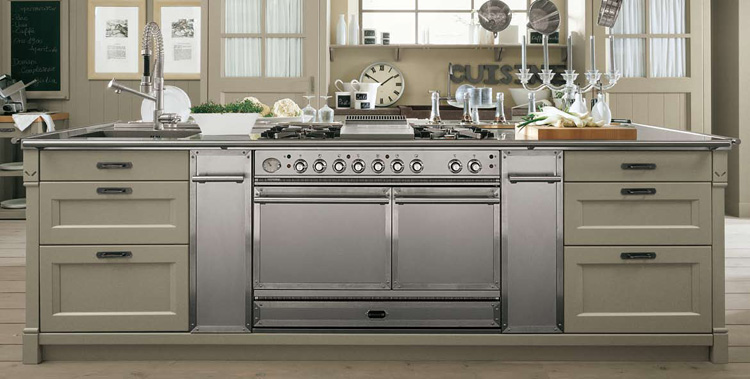

Arch. Silvio Stefani
A warm natural skin envelopes the total black structure of Natural Skin. The sculptural purity of its monolithic features divides and articulates the space, without the need for walls, providing unprecedented and practical storage options.
Its clean lines and proportions offer the possibility of creating rhythmical volumes of minimal metal inserts. A line designed to create the perfect synthesis of natural and modern technology. The consistency of the wood - unlaquered but treated with a specific process and the smoothness of the metal merge together to create the perfect balance.





Arch. Silvio Stefani
Minà is the new concept for the multi-functional island, where tradition meets cutting edge technologies, refined details and high quality craftsmanship.
The clarity of black metal and its shape become timeless and the epitome of the kitchens that are adapted for different types of rooms, be it minimalist or traditional. A true “machine for cooking”, enriched with modern household appliances and multi-purpose ovens, only adding to their traditional and evocative appeal. The details, such as the bright red handles, the drawers and the original hoods make Minà a system that is able to win any contest.
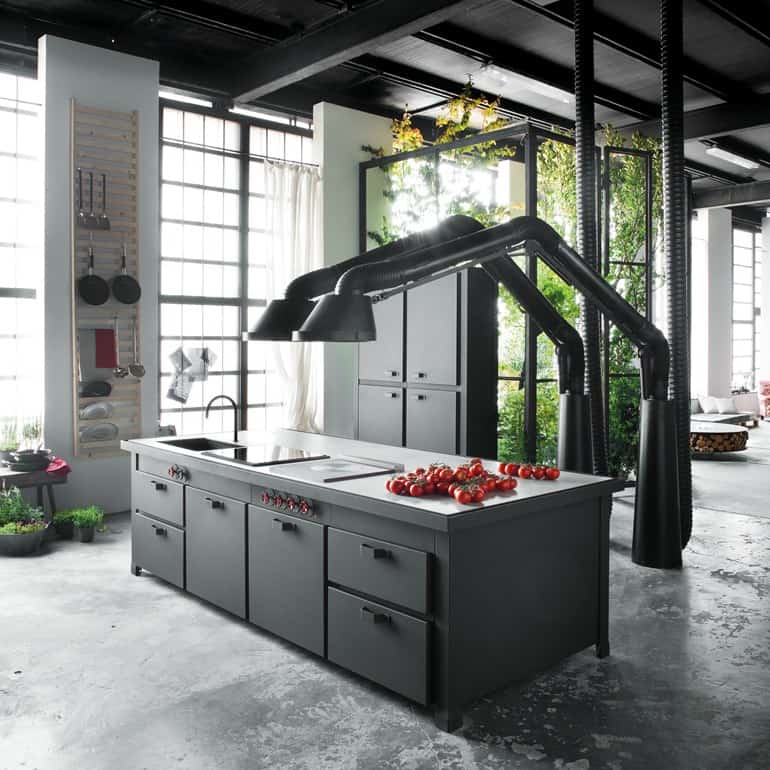


Electrolux Kitchen 2099
Any of you ever read those really weird “2099? comics that Marvel Comics put out in the 1990s? Well here’s something even weirder. A kitchen based around the “Claytronic Atom” – teeny tiny (nanometer) silicium spheres (tiny little robots) that can reconfigure instantly to create basically whatever forms you want. See this silly video to learn more, then continue below for basically the greatest kitchen ever.
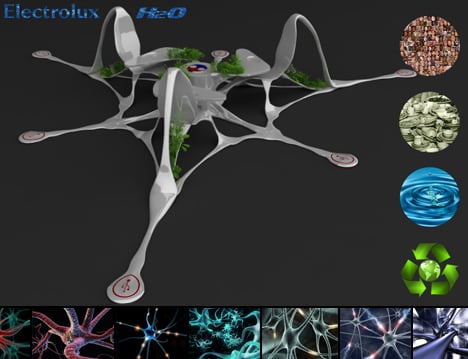
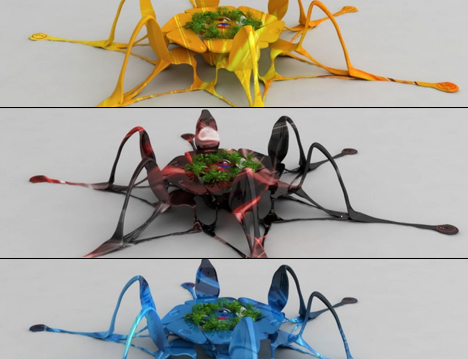
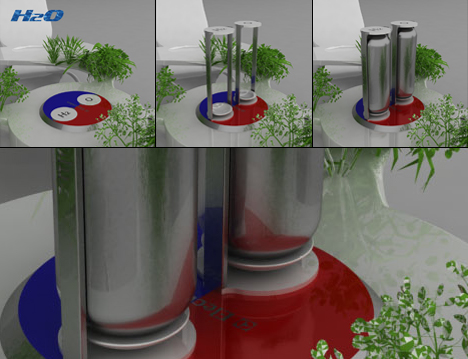
The kitchen has a single form pre-programmed into it so that it can be displayed and installed. After that, the form can be changed by its owner. After the basic kitchen is owned, new models can be purchased and installed (kind of like applications, or “apps.”) The shape the kitchen takes when brought out of the store is a simple cube form.
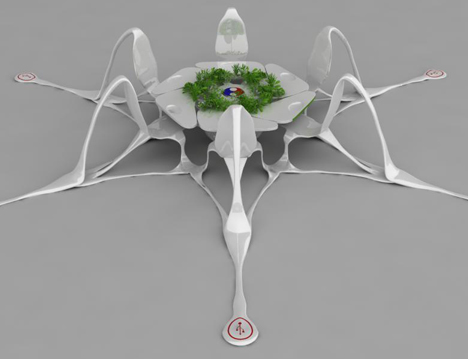
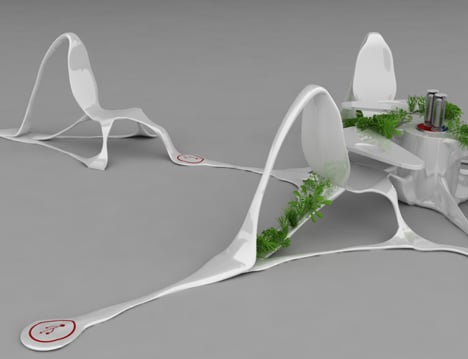
The cube can be transported easily, and set up simply in a range of different environments. The box contains cooking and cleaning equipment which take the shape of the instruments they need to include. The box contains heat conducting metal which can work with external tools (like pots and pans.) The box cleans itself as the substance that is the claytronic atoms absorbs the food waste and takes it to the proper garbage receptacle.
Lots of other stuff, too! The kitchen has a memory for recipes, the kitchen is powered by H20 fuel cells, the kitchen loves you! Oh that’s a pretty big deal too: totally green!
Designer: Peter Vardai
Source http://www.yankodesign.com/2009/08/06/electrolux-kitchen-2099/#ChCHUCcEgPlAU5Bk.99
Source http://www.yankodesign.com/2009/08/06/electrolux-kitchen-2099/#ChCHUCcEgPlAU5Bk.99

Strength of purpose
Credit List
Architect : Kerry Avery, Avery Team Architecture
Interior designer : Ray Lind
Kitchen designer : Morgan Cronin NKBA, Cronin Kitchens (Auckland)
Kitchen manufacturer : Cronin Kitchens
Interior designer : Ray Lind
Kitchen designer : Morgan Cronin NKBA, Cronin Kitchens (Auckland)
Kitchen manufacturer : Cronin Kitchens
Story by Charles Moxham
Photography by Jamie Cobeldick
Photography by Jamie Cobeldick
It is often the case that the most adept design results from a brief with few limitations.
Kitchen designer Morgan Cronin and interior designer Ray Lind joined forces to create this sunny, substantial kitchen. The clients contacted Cronin at a very early stage of the home's construction, giving him only an outline of the kitchen walls – almost a blank canvas to start the design from.
Kitchen designer Morgan Cronin and interior designer Ray Lind joined forces to create this sunny, substantial kitchen. The clients contacted Cronin at a very early stage of the home's construction, giving him only an outline of the kitchen walls – almost a blank canvas to start the design from.

"The brief from the owners was for a light-filled space that would combine a sense of flamboyance with a solid look that wouldn't date," says Cronin. "In addition, they liked dark timber and natural stone and wanted the benchtops taller than usual to suit their height." The house itself, designed by architect Kerry Avery, has a roof that appears to hover above the complete top floor. In the same spirit, the kitchen area is defined by floating lowered bulkheads. "In this area of the home, Avery extended the floor and bulkhead beyond the periphery of the building, creating a long, narrow bay with full-height glazing for the kitchen to flow into," says Cronin.


In all, Cronin created three kitchen designs for the clients to consider. The consensus was in favour of an option with an extended perimeter island and a suspended extraction hood that tuck neatly into the glass-walled bay. "Avery has created a house with a solid feel and I wanted to follow that through in the kitchen design," says Cronin. "The benchtops are 140mm deep and the island doors are all 28mm thick. I built the wall cabinetry up to 2.9m to reach the bulkheads. Raising the cabinetry to this level adds to the kitchen's solid presence and keeps all the elements in proportion." Pantry cupboards and crockery shelves are recessed into the walls of the kitchen. "Combined with the recessed workspace in the bay window, this arrangement leaves a clearly defined central area to show off the feature island with its Verde Bamboo granite benchtop," says Cronin. "This surface was sourced by Ray Lind." Lind also specified the dark stained American walnut for the island doors and a complementary Pearltone metallic paint with a clear high gloss coating for the wall cabinets.

RAW ECOLOGICAL PANEL
The Ecological Panel is the only panel in the world made from 100% recycled wood.
The Raw Particleboard Ecological Panel is made from wood particles of various sizes pressed with resins with a low formaldehyde content. The composition of the wood mixture of the Raw Particleboard Ecological Panel is 100% recycled wood. The larger particles are concentrated in the central part and the finer ones on the outside, so as to present compact surfaces for the most different fields of use.
It is a product with a low environmental impact, recycled and recyclable. A product with a low environmental impact, recycled and recyclable.
Formats
Length: da 3.760 a 5.60 mm
Width: da 1.860 a 2.200 mm
Thickness: da 8 a 40 mm
Main uses
- furniture
- coatings
- floors
- fire-resistant installations
- walls
- public places

FACED PANELS
The Ecological Panel, covered with the decoratives of the Mauro Saviola Group, enhances its creativity, aesthetics and harmony, giving back all the warmth and elegance of wood while protecting the environment.

For the sense of grandeur with its scale and proportions, for the views from this room, for the sleek composition and play of textures
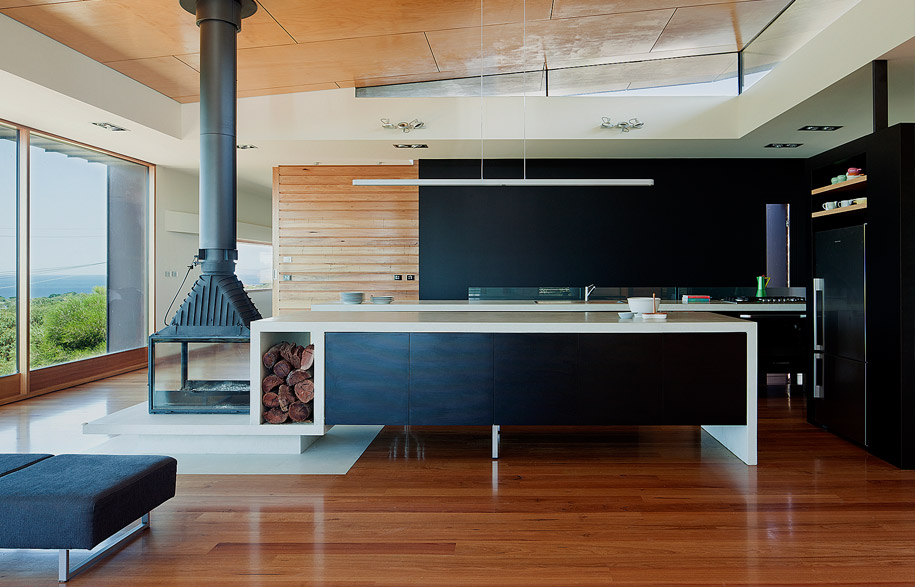
Source:http://www.habitusliving.com



No comments:
Post a Comment